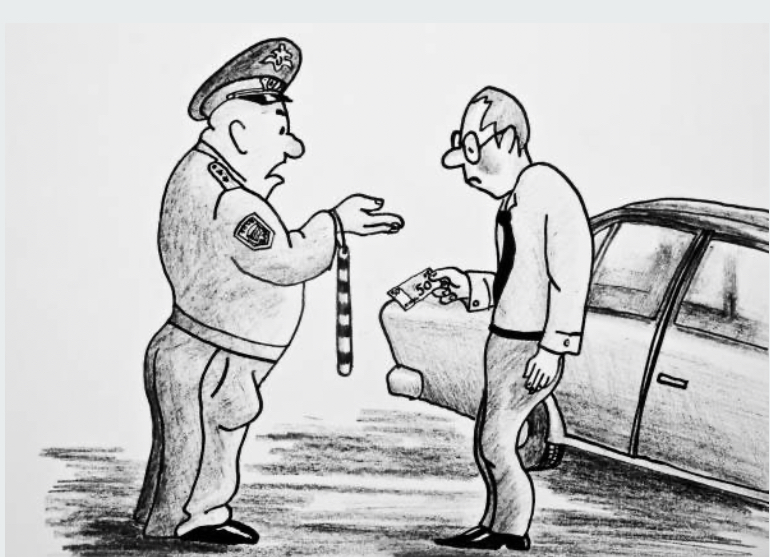Professional and Occasional Criminals


Introduction
Activities of criminals have been issues of concern throughout human history, with individuals engaging in unlawful behavior for various reasons. While some criminals commit crimes occasionally, others adopt a professional approach, making a career out of illegal activities. In this article, we shed more light on Understanding the differences between these two types of criminals in addressing the root causes of criminal behavior and implementing effective preventive measures.
Occasional criminals
Criminologists are of the view that the great majority of economic crimes are the work of amateur criminals whose decision to steal is spontaneous and whose acts are unskilled, impulsive, and haphazard. Millions of theft-related crimes occur each year, and most are not reported to police agencies. Many of these theft offenses are committed by school-age youths who are unlikely to enter into a criminal career and whose behavior has been described as drifting between conventional and criminal behavior.
Added to the pool of amateur thieves are the millions of adults whose behavior may occasionally violate the criminal law like; shoplifters, pilferers, and tax cheats–but whose main source of income comes from conventional means and whose self-identity is not criminal. Added together, their behaviors form the bulk of theft crimes.
Occasional property crime occurs when there is an opportunity or situational inducement to commit a crime. Opportunities are available to members of all classes, but members of the upper class have the opportunity to engage in the more lucrative business-related crimes of price fixing, embezzlement, and so on, which are closed to the lower classes. Hence, lower-class individuals are overrepresented in street crime.
Situational inducements are short-term influences on a person’s behavior that increase risk-taking. These include psychological factors, such as financial problems, and social factors, such as peer pressure. Opportunity and situational inducements are not the cause of crime; rather, they are the occasion for crime, hence, the term occasional criminal.
The opportunity to commit a crime and the short-run inducements to do so are not randomly situated; some people, typically poor young males, have an ample supply of both. Consequently, the frequency of occasional property crime varies according to age, class, sex, and so on. Occasional offenders are not professional criminals, nor do they make crime their occupation. They do not rely on skills or knowledge to commit their crimes rather they rely on situations and opportunities, they do not organize their daily activities around crime, and they are not committed to crime as a way of life.
Occasional criminals have little group support for their acts. Unlike professionals, they do not receive informal peer group support for their crimes. They will deny any connection to a criminal lifestyle and instead view their transgressions as being “out of character.” They may see their crimes as being motivated by necessity. For example, they were only borrowing the car the police caught them with; they were going to pay for the merchandise that they stole from the store -eventually. Because of their lack of commitment to a criminal lifestyle, occasional offenders may be the most likely to respond to the general deterrent effect of the law.
Professional Criminals
In contrast to occasional criminals, professional criminals make a significant portion of their income from crime. Professionals do not delude themselves with the belief that their acts are impulsive, one-time efforts, nor do they employ rationalizations to excuse the harmfulness of their actions. Consequently, professionals pursue their craft with vigor, attempting to learn from older, experienced criminals the techniques that will earn them the most money with the least risk, which Sutherland referred to as “differential association theory”.Though their numbers are relatively few, professionals engage in crimes that produce greater losses to society and perhaps cause more significant social harm.
Professional theft traditionally refers to nonviolent forms of criminal behavior that are undertaken with a high degree of skill for monetary gain and that exploit interests tending to maximize financial opportunities and minimize the possibilities of apprehension. The most typical forms include pocket-picking, burglary, shoplifting, forgery and counterfeiting, extortion, sneak theft, and confidence swindling (Defrauding a company or group after gaining their trust).
Relatively little is known about the career patterns of professional thieves and criminals. However, criminologists proposed three patterns:
• Youth come under the influence of older, experienced criminals who teach them the trade.
• Juvenile gang members continue their illegal activities at a time when most of their peers have dropped out to marry, raise families, and take conventional jobs.
•Youth sent to prison for minor offenses learn the techniques of crime from more experienced thieves.
Harry King, in his book “A Professional Thief Journey”, relates this story about his entry into crime after being placed in a shelter-care home by his recently divorced mother:
It was while I was at this parental school that I learned that some of the kids had been committed there by the court for stealing bikes. They taught me how to steal, where to steal them, and where to sell them. Incidentally, some of the “nicer people” were the ones who bought bikes from the kids. They would dismantle the bike and use the parts: the wheels, chains, handlebars, and so forth.
Here we can see how criminals may be encouraged in their illegal activities by so-called honest people who are willing to buy stolen merchandise and gain from criminal enterprise.
There is some debate in the criminological literature over who may be defined as a professional criminal. In his classic works, Edwin Sutherland used the term to refer only to thieves who do not use force or physical violence in their crimes and who live solely by their wits and skill. However, some criminologists use the term to refer to any criminal who identifies with a criminal subculture, who makes the bulk of his or her living from crime, and who possesses a degree of skill in his or her chosen trade.
Thus, one can become a professional safecracker, burglar, car thief, or fence. Some criminologists would not consider drug addicts who steal to support their habit as professionals; they lack skill and therefore are amateur opportunists rather than professional tech-nicians. However, professional criminals who take drugs might still be considered under the general pattern of professional crime. If the sole criterion for being judged a professional criminal were using crime as one’s primary source of income, then many drug users would have to be placed in the professional category.
Sutherland Professional Criminal
What we know about the lives of professional criminals has come to us through Conwell and Sutherland’s concept of professional theft which has two critical dimensions. First, professional thieves engage in limited types of crime. Professionals depend solely on their wit and skill. Thieves who use force or commit crimes that require little expertise are not considered worthy of the title “professional.” Their areas of activity include “heavy rackets,” such as bank robbery, car theft, burglary, and safecracking. You can see that Conwell and Sutherland’s criteria for professionalism are weighted heavily toward con games and trickery and give little attention to common street crimes.
The second requirement of professional theft is the exclusive use of wits, front (a believable demeanor), and talking ability. Manual dexterity and physical force are of little importance. Professional thieves must acquire status in their profession. Status is based on their technical skill, financial standing, connections, power, dress, manners, and wide knowledge base. In their world, “thief” is a title worn with pride. Conwell and Sutherland also argue that professional thieves share feelings, sentiments, and behaviors. Of these, none is more important than the code of honor of the underworld; even under the threat of the most severe punishment, a professional thief must never inform (squeal) his or her fellows. Sutherland and Conwell view professional theft as an occupation with much the same internal organization as that characterizing such legitimate professions as advertising, teaching, or police work. They conclude:
A person can be a professional thief only if he is recognized and received as such by other professional thieves. Professional theft is a group way of life. One can get into the group and remain in it only by the consent of those previously in the group. Recognition as a professional thief by other professional thieves is the necessary, universal, and definitive characteristic of the professional thief. Professional thieves changed their behavior over time in response to crime control technology.
The Professional Fence
Some experts argued that Sutherland’s view of the professional thief may be outdated because modern thieves often work alone, are not part of a criminal subculture, and were not tutored early in their careers by other criminals. However, some important research efforts show that the principles set down by Sutherland still have value for understanding the behavior of one contemporary criminal type professional fencer, who earns his or her living solely by buying and reselling stolen merchandise. The fence’s critical role in criminal transactions has been recognized since the eighteenth century. They act as middlemen who purchase stolen merchandise -ranging from diamonds to auto hubcaps-and resell them to merchants who market them to legitimate customers.
Carl Klockars examined the life and times of one successful fence who used the alias Vincent Swaggi. Through 400 hours of listening to and observing Swaggi, Klockars found that this highly professional criminal had developed techniques that made him almost immune to prosecution. During a long and profitable career in crime, Swaggi spent only 4 months in prison. He stayed in business, in part, because of his sophisticated knowledge of the law of stolen property. To convict someone of receiving stolen goods, the prosecution must prove that the accused owned the goods and knew that they had been stolen.
Swaggi had the skills to make sure that these elements could never be proved. Also helping Swaggi stay out of the grasp of the law were the close working associations he maintained with society’s upper classes, including influential members of the justice system. Swaggi helped them purchase stolen items at below-cost, bargain prices. He also helped authorities recover stolen goods and therefore remained in their good graces. Klockars’s work strongly suggests that fences customarily cheat their thief clients and at the same time cooperate with the law.
Sam Goodman, a fence interviewed by sociologist Darrell Steffensmeier, lived in a world similar to Vincent Swaggi’s. He also purchased stolen goods from a wide variety of thieves and suppliers, including burglars, drug addicts, shoplifters, dockworkers, and truck drivers. According to Goodman, to be successful, a fence must meet the following conditions:
• Upfront cash: All deals are cash transactions, so an adequate supply of ready cash must always be on hand.
•Knowledge of dealing with learning the ropes: The fence must be schooled in the knowledge of the trade, including developing a “larceny sense”; learning to “buy right” at acceptable prices; being able to “cover one’s back” and not get caught; finding out how to make the right contacts; and knowing how to “wheel and deal” and how to create profit opportunities.
• Connections with suppliers of stolen goods: The successful fence must be able to engage in long-term relationships with suppliers of high-value stolen goods who are relatively free of police interference. The warehouse worker who pilfers is a better supplier than the narcotics addict, who is more likely to be apprehended and talk to the police.
• Connections with buyers: The successful fence must have continuing access to buyers of stolen merchandise who are inaccessible to the common thief. For example, they must make contacts with local pawn shops and other distributors of secondhand goods and be able to move their material without drawing attention from the authorities.
•Complicity with law enforcers: The fence must work out a relationship with law enforcement officials who invariably find out about the fence’s operations. Steffensmeier found that to stay in business the fence must either bribe officials with good deals on merchandise and cash payments or act as an informer who helps police recover particularly important merchandise and arrest thieves.
Fences handle a tremendous number of products-televisions, cigarettes, stereo equipment, watches, autos, and cameras. In dealing with their merchandise, they operate through many legitimate fronts, including art dealers, antique stores, furniture and appliance retailers, remodeling companies, trucking companies, and jewelry stores. When deciding what to pay the thief for goods, the fence uses a complex pricing policy: Professional thieves who steal high-priced items are usually given the highest amounts, about 30 to 50 percent of the wholesale price. For example, a television valued at $5,000 may be bought for $1,500.
However, the amateur thief or drug addict who is not in a good bargaining position may receive only 10 cents on the dollar. Fencing seems to contain many of the elements of professional theft as described by Sutherland: Fences live by their wits, never engage in violence, depend on their skill in negotiating, maintain community standing based on connections and power, and share the sentiments and behaviors of their fellows. The only divergence between Sutherland’s thief and the fence is the code of honor; it seems likely that the fence is much more willing to cooperate with authorities than most other professional criminals.
The Nonprofessional Fence
Professional fences have attracted the attention of criminologists, but like other forms of theft, fencing is not dominated solely by professional criminals. A significant portion of all fencing is performed by amateur or occasional criminals. For example, novice burglars, such as juveniles and drug addicts, often find it so difficult to establish relationships with professional fences that they turn instead to nonprofessionals to unload the stolen goods.
One type of occasional fence is the part-timer who, unlike professional fences, has other sources of income. Part-timers are often “legitimate” business people who integrate the stolen merchandise into their regular stock. For example, the manager of a local bike store who buys stolen bikes and rents them along with his legitimate merchandise is a part-time fencer. An added benefit of the illegitimate part of his work is the profit he makes on these stolen items, which are not reported for tax purposes.
Some merchants become actively involved in theft either by specifying the merchandise they want the burglars to steal or by “fingering” victims. Some businesspeople sell merchandise and then describe the customers’ homes and vacation plans to burglars so that they can steal it back.
Associational fences are amateur fences that barter stolen goods for services. These amateurs typically have legitimate professional dealings with known criminals including bail bonds agents, police officers, and attorneys. A lawyer may demand an expensive watch from a client in exchange for legal services. Bartering for stolen merchandise avoids taxes and becomes a transaction in the underground economy.
Neighborhood hustlers buy and sell stolen property as one of the many ways they make a living. They keep some of the booty for themselves and sell the rest in the neighborhood. These dealmakers are familiar figures to neighborhood burglars looking to get some quick cash by selling them stolen merchandise.
Amateur receivers can be strangers approached in a public place by someone offering a great deal on valuable commodities. It is unlikely that anyone buying a $3,000 camera for $300 cash would not suspect that it may have been stolen. Some amateur receivers make a habit of buying suspect merchandise at reasonable prices from a “trusted friend,” establishing an ongoing relationship. This practice encourages ages of crime because the criminals know that there will always be someone to buy their merchandise. In addition to the professional fence, the nonprofessional fence may account for a great deal of criminal receiving. Both professional and amateur thieves have a niche in the crime universe.
Criminologists and legal scholars recognize that common theft offenses fall into several categories linked together because they involve the intentional misappropriation of property for personal gain. In fencing, goods are bought from another who is in illegal possession of those goods. case of embezzlement, burglary, and larceny, the property is taken through stealth. In other kinds of theft, such as bad checks, fraud, and pretenses, goods are obtained through deception.
Conclusion
Occasional and professional criminals represent two different categories of individuals involved in criminal enterprises. Occasional criminals commit crimes sporadically, often driven by immediate needs, desperation, or social influences. On the other hand, professional criminals adopt a systematic approach, making a career out of illegal activities and often operating within complex criminal networks. While occasional criminals may not possess specialized criminal skills or extensive knowledge of criminal networks, their actions still have a significant negative impact on society. It is crucial to address the underlying causes of occasional and professional criminal behavior through rehabilitation programs, social support systems, and educational opportunities to prevent recidivism.




